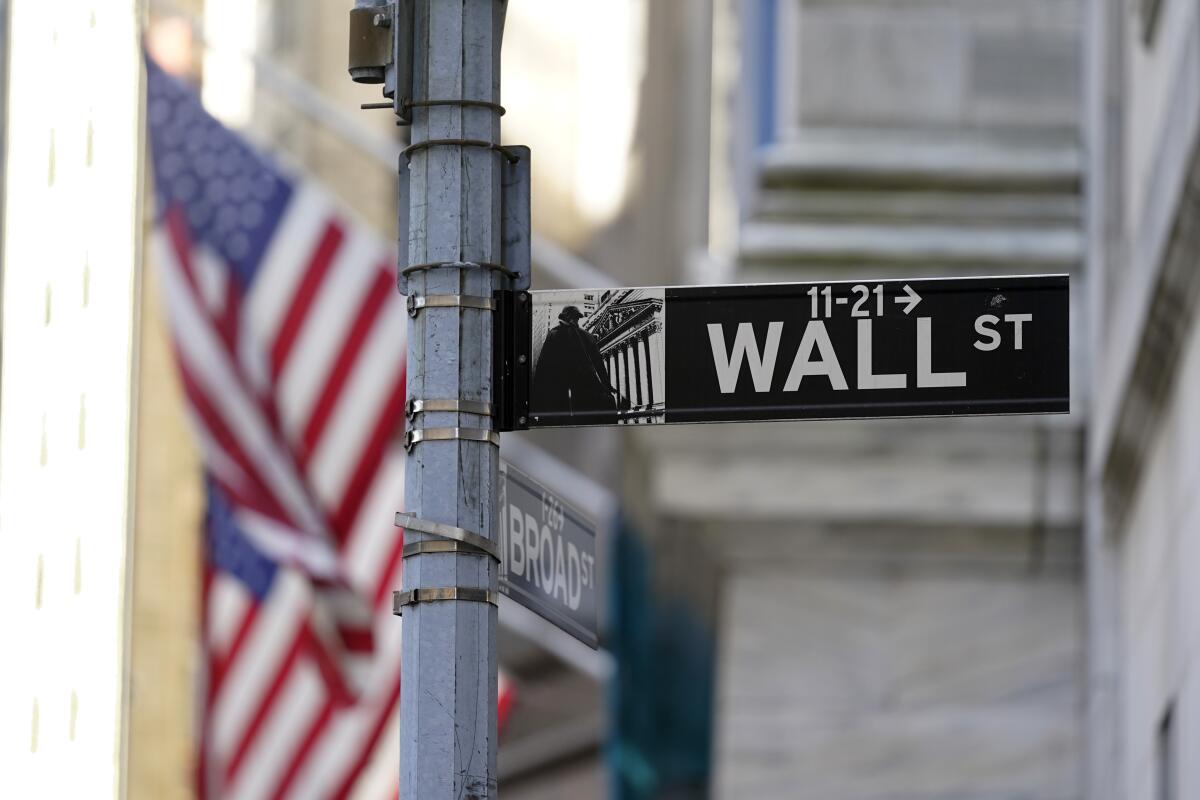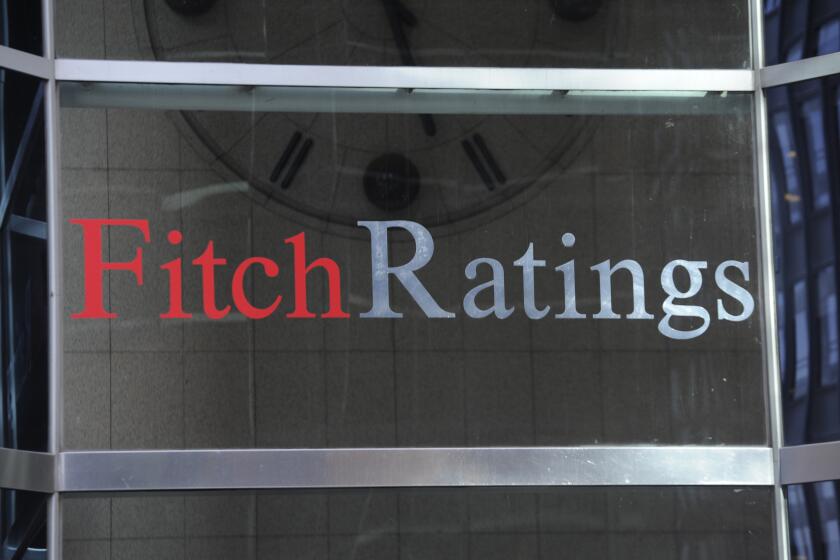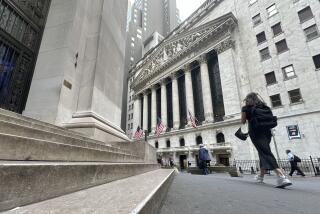Stocks slip as Wall Street’s big rally cools further

Stocks slipped Thursday as Wall Street’s red-hot rally for the year cooled a bit more.
The Standard & Poor’s 500 index fell 11.50 points, or 0.3%, to 4,501.89, notching its third straight loss after setting a 16-month high. The Dow Jones industrial average slipped 66.63 points, or 0.2%, to 35,215.89, and the Nasdaq composite edged down 13.73 points, or 0.1%, to 13,959.72.
A day earlier, U.S. stocks tumbled to their worst loss in months. Although that drop came after Fitch Ratings downgraded the U.S. government’s credit rating, analysts say they expect the move to mean little for financial markets. U.S. Treasury debt is the cornerstone of the global financial system, but the downgrade probably won’t push any investors to dump theirs.
Fitch Ratings downgraded the U.S. credit rating, citing an expected increase in government debt and a “steady deterioration in standards of governance.”
Big questions that remain are whether the economy will avoid a recession, how corporate profits will do and where interest rates are heading. Hanging over them all is whether the stock market’s big run this year was overdone, as critics suggest.
Treasury yields in the bond market continued to march higher Thursday, putting more pressure on the stock market. The yield on the 10-year Treasury rose to 4.18% from 4.09% late Wednesday and from 2.75% a year ago.
Higher yields mean bonds are paying more in interest, which can peel buyers away from stocks. They also make borrowing more expensive for companies, crimping their profits. Yields have climbed as the economy has remained remarkably resilient despite much higher interest rates meant to drive down inflation. The U.S. government also continues to borrow heavily.
In the latest reading on the economy, a report showed that the number of workers applying for unemployment benefits rose last week but remains relatively low.
A solid job market has helped to keep the economy out of a long-predicted recession. But it also threatens to keep upward pressure on inflation. That could push the Federal Reserve to keep raising interest rates, dashing Wall Street’s hopes that the last increase of the cycle has already passed.
The back-to-the-office campaign by many employers has run into resistance from workers. They’ve struck a truce of sorts — hybrid work.
“The Fed has singled out the jobs market as a potential inflationary threat, and until it shows some signs of deterioration, we’re still looking at a ‘higher for longer’ outlook for interest rates,” said Mike Loewengart, head of model portfolio construction at Morgan Stanley Global Investment Office.
The Fed has raised its federal funds rate to the highest level in more than two decades, up from virtually zero early last year. High rates grind down inflation by bluntly slowing the entire economy and dragging on prices for investments.
Critics say a consensus has formed too quickly on Wall Street that inflation will continue to moderate and that the Fed can not only halt its rate increases but even begin cutting them early next year.
Across the Atlantic, the Bank of England on Thursday raised its main interest rate again to a 15-year high and indicated it could stay high for a while.
A report from the Institute for Supply Management on Thursday said growth in the U.S. economy’s services industries continued last month, though at a slower rate than economists expected. A separate report from S&P Global also said growth is slowing for service industries, pointing to customers contending with the more expensive cost of living and higher interest rates.
Earnings reporting season also continues for big U.S. companies. Most have reported better-than-expected results for the spring, but that’s usually the case and expectations were quite low coming into this quarter’s reporting period
Qualcomm tumbled 8.2%, one of the larger losses in the S&P 500. The company reported weaker-than-expected revenue for the spring, even though its profit topped forecasts.
On the winning side was Clorox, which jumped 9%. It reported stronger profit and revenue than analysts expected.
Energy producers’ stocks benefited as crude prices rallied after Saudi Arabia said it will keep in place cuts to production meant to boost oil’s price. Exxon Mobil climbed 1.7%.
Amazon and Apple each reported results for their most recent quarter after trading ended for the day. Shares of both companies have soared more than 45% this year on expectations of continued growth. That meant pressure on them to deliver big results to justify the big stock gains.
Amazon posted better-than-expected revenue and profit, sending its stock higher in after-hours trading. Growth of the company’s cloud unit AWS continued to slow, but its flagship online retail business showed signs of strengthening.
Investors were less enthusiastic about Apple’s results. The tech giant’s profit beat expectations, but its revenue kept slipping, and iPhone sales came in below analysts’ predictions.
Apple and Amazon are two of the largest companies on Wall Street by market value, which gives their stock movements more heft on the S&P 500 and other indexes.
Another potentially market-moving report will arrive Friday morning, when the U.S. government gives its latest monthly update on the job market. Fed Chair Jerome H. Powell has highlighted it as a key data point that could influence the Fed’s next move on interest rates in September.
In stock markets abroad, indexes were down across Europe and much of Asia.
More to Read
Inside the business of entertainment
The Wide Shot brings you news, analysis and insights on everything from streaming wars to production — and what it all means for the future.
You may occasionally receive promotional content from the Los Angeles Times.










